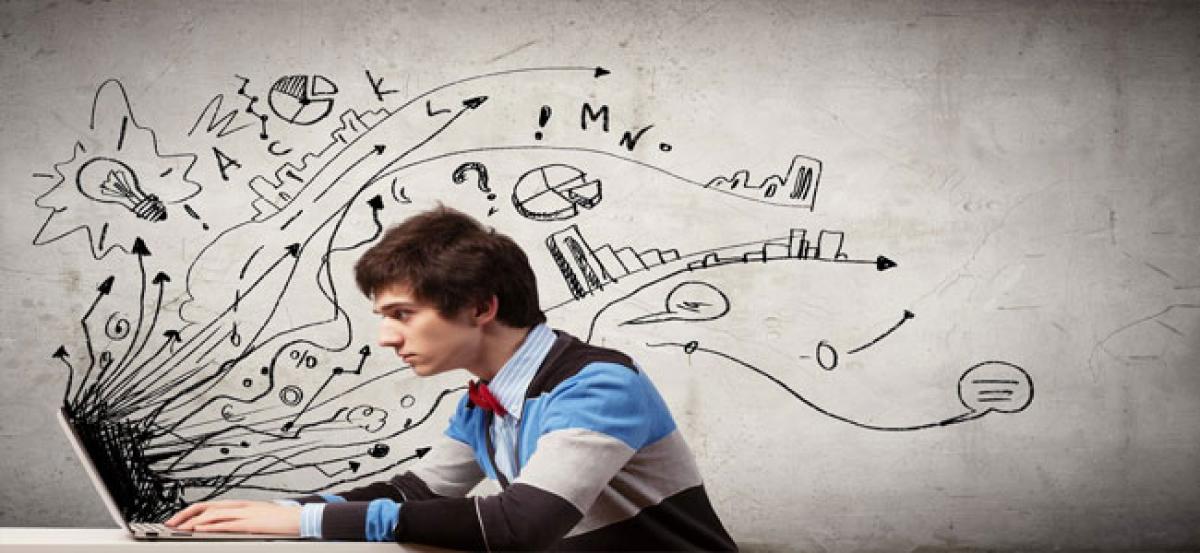Live
- AI Model Detects Residual Brain Tumors in 10 Seconds, Offers Real-Time Surgical Guidance
- Reliance and Disney Complete JV Deal to Strengthen Entertainment Presence in India
- UP Govt Agrees to Protesters’ Demand, PCS Exam to Be Held in One Day
- Trump’s Social Security Tax Promise Faces Hurdles: What Retirees Need to Know
- Strict Action Needed Against Attacks on Government Employees - Retired Employees
- Hyundai Motor India Limited Announces 2024 Edition of ‘Hyundai Always Around’ Campaign
- Minister for Environment, Forests, and Endowments Celebrates Karthika Pournami and Guru Nanak Jayanti
- World Quality Day: Hindustan Zinc Reaffirms Commitment to Superior Product Quality & Innovation
- Grand Kartika Purnima Celebrations at Nagar Kurnool’s Saraswati Shishu Mandir
- Children’s day celebrations, Karnataka remnisences on Nehru’s contributions
Just In

Multiple intelligences theory is the fruit of cognitive science and reflects an effort to rethink the theory of measurable intelligence embodied in intelligence testing.
An intelligence is the ability to solve problems, or to create products, that are valued within one or more cultural settings. – Howard Gardner
Multiple intelligences theory is the fruit of cognitive science and reflects an effort to rethink the theory of measurable intelligence embodied in intelligence testing.
A key point to note about learning is that we tend to learn in our own ways using different methods, different styles, and at different speeds. Each of us responds to a particular style of teaching or classroom instruction in a specific way. Learning, inarguably, should be aligned with our intelligence as one-size-fits-all approach can be dysfunctional.
Howard Gardner has identified eight intelligences
- Linguistic - The ability to think in words and to use language to express complex meanings.
- Logical – Mathematical – The ability to calculate, quantify, consider propositions and hypotheses and perform complex mathematical operations.
- Spatial- Ability to think in three dimensional ways, including imagery, objects in space.
- Bodily/Kinesthetic: Ability to manipulate objects and fine tune physical skills.
- Musical – Ability to distinguish and create pitch, melody, rhythm and tone.
- Interpersonal: Ability to understand and interact effectively with others.
- Naturalist - Ability to observe patterns in nature, identify and classify objects and understand natural and human made systems.
- Intrapersonal: Ability to know your strengths and weaknesses, good with setting their own personal goals and have a hobby that they like to keep to themselves.
When the educational approach is well aligned with one’s stronger intelligence, people will understand the subject more easily and with greater enthusiasm. Most people excel in only two or three of the intelligences listed by Howard Gardner. Within each type of intelligences, there are different learning styles.
And within each learning style, people learn at different paces – slow, medium or fast. A system of delivery that takes into account all these dimensions will be truly effective.
Unfortunately, schools standardize the delivery and do not customize it taking into account the unique circumstances of different students. The students who succeed in schools today do so not because of great teaching but majorly because their intelligence happens to match the dominant paradigm used in the classroom.
When this is not the case, they struggle. The analysis done through spectrum project (1990) showed that students obtaining standard deviation or more, above the average were gifted with a determine intelligence, while those obtaining a standard deviation, or less below the average show disadvantage in that intelligence. The results show that the majority of students demonstrate abilities and skills in the different intelligences.
It is seen that visual space intelligence can be below average with highly social intelligent children whereas linguistic skills can be very high at the same time. The intellectual profile of a preschool (4years) student with difficulties in most of the Howard Gardner defined intelligences showed that with the exception of social intelligence the kids had difficulties and weak points in all the intelligences evaluated.
The results of many work show that the MI evaluation model represent a complimentary to the psychometric evaluation and it is useful for designing the classroom development profile, especially for children with retarded cognitive problems or difficulties referred to basic abilities.
Here are a few salient ways where students fulfil their intellectual needs through multiple intelligence-1. Development of increased sense of responsibility, self-direction and independence. The self-direction and motivation of these students help them tackle various tactical situations on a level-headed manner. Students become accomplished at incubating their own projects, gathering the necessary resources and materials, and making well-planned presentations of all kinds.
2. Discipline problems are significantly reduced. Students who were previously identified as having serious behavioural problems show rapid improvement during the beginning and by mid-course, they are making important contributions to their groups.
3. All students develop and apply new skills. Students learn newer skills and learn to design multimodal presentations including songs, skits, visuals, poems, games, surveys, puzzles, and group participation activities, empowering themselves with valuable outlets to express themselves clearly.
4. Academic achievement improves. With multiple means to teach lessons, student learns to approach varied solutions to any singular problem. This leads to an increase in retention, with academic results being on an unprecedented high. Students, who have previously been unsuccessful in school, find new mediums for recalling information such as musical, visual and kinaesthetic, which significantly improve grades.
Concluding the above, we see that when the focus of education shifts to learning rather than teaching, students enjoy their lessons and view the world with unique pair of eyes. Such innovative methods are set to usher in a new phase of education, where the kernel of learning would lie on awakening one’s inner abilities.
But the question still remains: is intelligence a general capacity for reasoning, a unique blend of different intelligence styles or something else?
The article is contributed by Manbir Singh Bedi - Founder, Primary Plus.

© 2024 Hyderabad Media House Limited/The Hans India. All rights reserved. Powered by hocalwire.com







